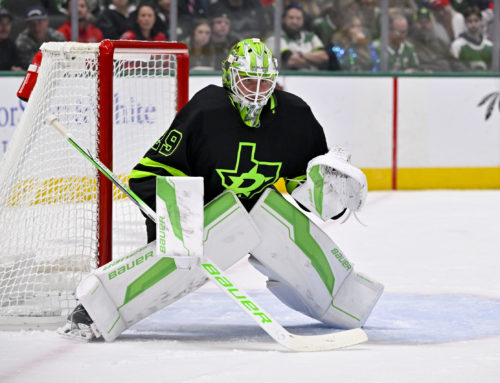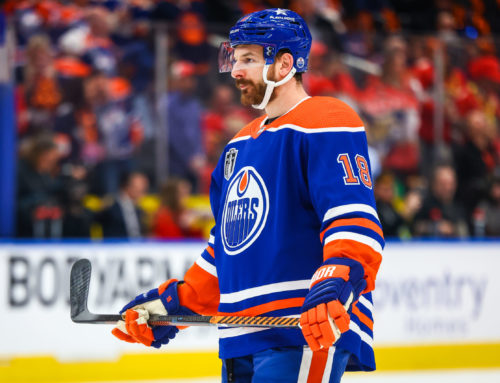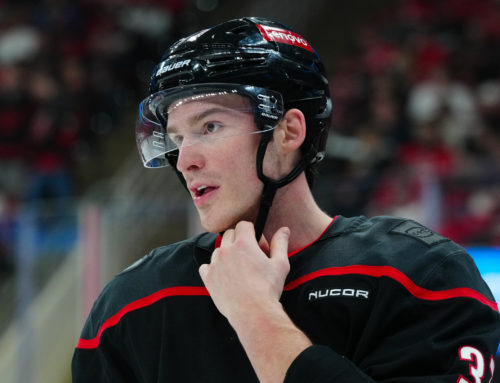Welcome back fantasy hockey fans! Last time, we delved into the bold world of NHL Equivalency (NHLe) and Player Tracking Technology. Today, we’re homing in on NHLe and how this game-changing metric can be your ace in the hole come draft day. Eager to take your fantasy hockey game to the next level? Let’s dive in.
The Mechanics of NHLe in Draft Strategy
Draft day is a vital moment that can make or break your fantasy hockey season. While many managers rely on traditional stats and gut feelings, incorporating NHLe into your strategy offers a data-driven edge. This metric is particularly useful for gauging the potential of rookies and prospects; players who are often overlooked or underestimated in drafts.
But how do you effectively weave NHLe into your draft day decisions? First, consider the league quality coefficients for the leagues where your potential draft picks have played. This will give you a more accurate NHLe score and, consequently, a clearer picture of a player’s potential NHL performance. Next, factor in the player’s position and the team they are likely to play for. While NHLe is a powerful tool, it doesn’t operate in a vacuum. A forward with a high NHLe score who is slated to play on a high-scoring line will likely have a better season than if they were stuck on the third or fourth line. Lastly, use NHLe in conjunction with other advanced stats. While it’s a strong indicator of a player’s scoring potential, it should be part of a broader analytical approach that includes metrics like Corsi, Fenwick, and even Player Tracking Technology data, which you’re already familiar with from our previous discussion. By integrating NHLe into a multifaceted draft strategy, you’re not just playing the game; you’re playing it smart.
Identifying Sleeper Picks
NHLe is particularly useful for identifying sleeper picks—players who are likely to outperform their draft position. By comparing the NHLe values of players who are ranked lower in conventional draft lists, you can uncover hidden gems that other managers may overlook.
Risk Mitigation
Another application of NHLe is in risk mitigation. Players from non-NHL leagues often come with a higher risk due to the uncertainty of how their skills will translate to the NHL. NHLe can provide a more accurate picture, allowing you to draft with greater confidence.
Positional Analysis
While NHLe is generally used for evaluating forwards, it can also offer insights into the potential of defensemen and even goalies. By understanding the NHLe values across different positions, you can make more balanced and strategic choices during your draft.
In order to further understand the potential of NHLe while drafting, we can crack open some cases and see some rookies which I believe to be great players to look into and research.
Case Study One: Marco Rossi
Let’s kick things off with Marco Rossi‘s 2022-23 season in the AHL with the Iowa Wild. Rossi put up some impressive numbers, scoring at a rate of about 0.962 points per game over 53 games. When we plug these stats into our NHLe formula, using the AHL’s League Quality coefficient of 0.55, we get an NHLe score of roughly 38 points for a full NHL season. My word of advice is if you see Rossi still hanging around in the later rounds of your draft, you might want to give him a serious look. His NHLe score suggests he’s got the talent to contribute some solid points. And if you’re in a keeper or dynasty league, Rossi could be a fantastic long-term investment.
Case Study Two: Leo Carlsson
Moving on to Leo Carlsson, who spent his 2022-23 season with Orebro HK in the Swedish Hockey League. Carlsson had a points-per-game rate of about 0.568 over 44 games. Using the SweHL’s League Quality coefficient of 0.45, we find that Carlsson’s NHLe score would be around 25 points for a full NHL season. Carlsson’s NHLe score of 25 makes him an intriguing option, especially in the later rounds or as a waiver-wire pickup. This score can be a great asset in evaluating his potential impact in the NHL, particularly if you’re hunting for a player who might just exceed everyone’s expectations.
Case Study Three: Matthew Knies
Last but not least, let’s dive into Matthew Knies’ 2022-23 season with the University of Minnesota. Knies had a points-per-game rate of about 1.05 over 40 games. Assuming a League Quality coefficient (0.34) similar to other top college leagues, Knies’ NHLe would be around 29 points for a full NHL season. With an NHLe score of 29, Knies could be a solid mid-round pick with some serious upside. If you’re in a standard league and on the lookout for a sleeper pick with high potential, Knies could be just the player you’re looking for. His NHLe score offers a valuable lens through which to assess his potential NHL impact.
Incorporating NHLe into Your Strategy
By weaving NHLe scores into your draft strategy, you’re arming yourself with another layer of insight, especially when it comes to rookies and prospects. This metric allows you to better gauge a player’s potential scoring in the NHL, helping you unearth those hidden gems while steering clear of potential duds.
The Long Game: Keeper and Dynasty Leagues
In keeper and dynasty leagues, the stakes are higher, and the planning goes deeper. You’re not just playing for this season; you’re building a team that will compete for years to come. This is where NHLe can be a game-changer, offering a long-term perspective that other metrics might not capture. Here’s how you can use NHLe to build a dynasty.
Prospect Scouting
In dynasty and keeper leagues, scouting prospects is crucial. NHLe can help you identify young talents in non-NHL leagues who have the potential to become future stars. By keeping tabs on their NHLe scores, you can get a jump on your competition, picking up these players before they become household names.
Contract Considerations
When deciding which players to keep, contract lengths and salary cap hits are often important factors. A player with a high NHLe score but a lower salary could offer excellent value, allowing you to allocate resources to strengthen other areas of your team.
Age and Development Curve
NHLe isn’t just a snapshot; it’s a metric that can show a player’s development over time. By tracking a player’s NHLe scores across multiple seasons, you can get a sense of whether they’re improving, plateauing, or declining. This is invaluable information when you’re deciding whether to keep a player for the long haul.
Team Context
A player’s NHLe score doesn’t exist in isolation; it’s influenced by the team they’re on. For instance, a young player with a high NHLe score might see their actual NHL production suppressed if they’re stuck on a lower line. However, in a keeper or dynasty league, you’re playing the long game. That player could be a top-line star in a year or two, making them a valuable asset to hang onto.
Trade Deadline Strategy
As the trade deadline approaches, NHLe can be a powerful tool for both buyers and sellers. If you’re looking to make a playoff push, you might target players with high NHLe scores who are likely to contribute immediately. On the flip side, if you’re looking to rebuild, trading away older assets for younger players with high NHLe scores can set you up for future success.
Offseason Planning
The offseason is a critical time in keeper and dynasty leagues. This is when you decide which players to keep and which to cut. NHLe can guide these decisions, helping you identify core players to build around and prospects to bring into the fold. It can also inform your draft strategy, helping you find rookies who can make an immediate impact or offer long-term value.
In summary, NHLe is more than just a draft tool; it’s a comprehensive metric that can guide your strategy in keeper and dynasty leagues from season to season. By understanding and applying NHLe scores in this context, you’re not just building a team for this year; you’re laying the foundation for sustained success.
One Comment
Leave A Comment
You must be logged in to post a comment.





 FLA
FLA CAR
CAR MIN
MIN BUF
BUF EDM
EDM DET
DET TOR
TOR ANA
ANA NYR
NYR

Where do you find the LQx for each league?